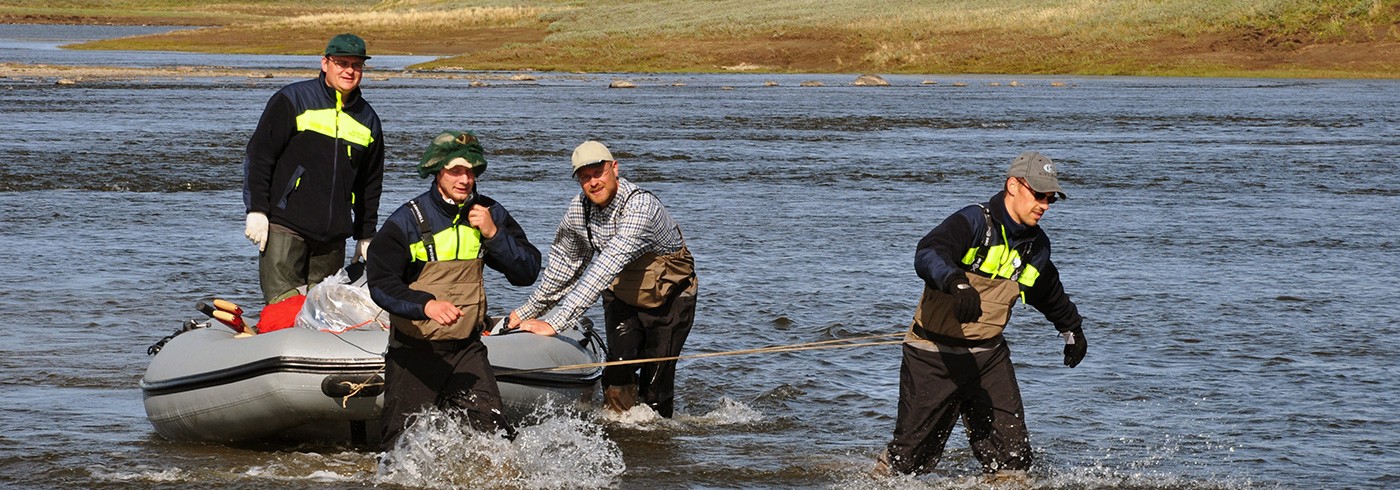Ice extent in time and space on the Taymyr Peninsula, Arctic Siberia
5 July 2010 - 20 August 2010
Digging out and documentation of sediment in a river profile along the Bolshaya Balaknya. Photo: Ívar Örn Benediktsson
The Arctic is currently undergoing rapid changes in response to global warming, and there are clear indications that these climate changes are amplified in the northern latitudes. Knowledge about earlier climate changes and their effect on the physical environment is fundamental to our ability to understand and predict what the future holds for us.
Large portions of the northern hemisphere have periodically been covered with massive ice sheets. The last glacial cycle (Weichsel, 115,000–10,000 years ago) did not consist of one ice age with one inland ice sheet, but rather a number of periods with ice-sheet growth and decay. On the Taymyr Peninsula these ice sheets formed large ice-marginal complexes (up to 100 m high and 10–15 km wide) of which we can see traces on maps and satellite images. We are not entirely certain as to when they were formed, due to the inadequacy of the dating methods available when the regions were investigated during the 1960–1970s, but we can hopefully find out using modern methods. Ice sheet growth and decay also produce radical changes in flora and fauna, as a result of which ecosystem changes over the last 50,000 years are being studied as part of the project as well.

Sawing boulders on moraine ridges. The content of cosmogenic nuclides in a boulder provides an idea of when it was deposited by an inland ice sheet. Photo: Ívar Örn Benediktsson
Sampling along the river
The polar research group at Lund University has conducted glacial geological research on the northern Taymyr Peninsula in northwestern Siberia and on the Severnaya Zemlya Archipelago in the Kara Sea in five previous field seasons (1996–2003). This time the expedition travelled to the Taymyr Peninsula’s southern portion and the Bolshaya Balakhnya river, which flows from its headwaters towards the southeast and Khatanga Bay. Here the river cuts through the high ice-marginal formation, as well as the marine, lake and river sediment in the low-lying areas between them.
We travelled downstream a total of 450 km along the meandering course of the Bolshaya Balakhnya in three Zodiac rafts. Geological investigations were carried out from a number of base camps by cleaning up and documenting the natural sections, 5–30 m high, that the river has created along its path. Numerous samples were collected in order to date the age of the sediment deposition (14C, ESR, OSL) and to extract plant and animal DNA, which makes it possible to detect changes at the species and population level of flora and fauna over time. Flying over the area by helicopter, we located glacially transported boulders on the upper surfaces of the ice margin formations. They were sampled and will be dated by measuring cosmogenic nuclides.
Delayed results
Because of new and very strict customs regulations, the bulk of our sample material is unfortunately still in Russia awaiting shipment to Lund. As a result, no dating work has been done, making it impossible to interpret the studies. We need to have dating results well in advance of the next scheduled field season on the Taymyr Peninsula, in the summer of 2012. Our future results will be published in international scientific journals.







